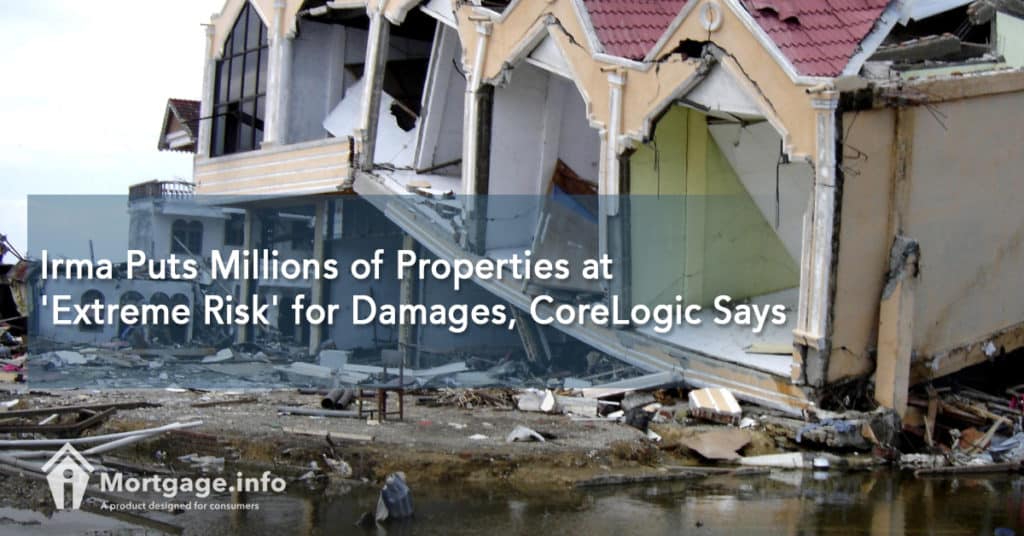FLORIDA – Millions of properties, both residential and commercial, are in jeopardy as Hurricane Irma brings extremely strong winds and hurricane-driven storm surges.
According to financial and property information leading provider, CoreLogic, nearly 8.5 million properties in the Southeastern State are at great risk for damages from devastating wind brought by Irma. The risk levels for wind damage could either be categorized as “high” risk, “very high” risk or “extreme” risk.
In addition, roughly 3.5 million properties in the same state are at risk for storm surge damage caused by the hurricane. This forecast by CoreLogic does not include any potential destruction to properties caused by inland flooding.
Irma puts millions of properties at ‘extreme risk’ in the big coastal cities in Florida. The Miami metropolitan areas, Fort Lauderdale-Pompano Beach sector, falls under the “extreme” risk for wind damages. Over 2.2 million business and private properties would potentially receive the worst wind-caused damage from the hurricane.
[sc_content_link label=”Get Matched with a Lender, Click Here.”]
Irma Reduced to Tropical Storm
The once-hurricane Irma is now reduced to a tropical storm. It has maximum sustained winds of 70 miles per hour. As it continues to drive further inland, it is expected to weaken even more says the National Hurricane Center.
Irma started to develop around the Cape Verde Islands on August 30, 2017. It rapidly intensified and grew into a Category 2 Hurricane in just 24 hours. Irma reached Category 5 with peak intensities of 185 mph winds. Irma is the second major hurricane to hit the United States in 2017.
According to the National Weather Service, The now-tropical storm Irma entered the United States in the southeastern coast as a hurricane with an incredible and powerful force. The storm is still extremely dangerous. Worldwide, It is the strongest tropical cyclone in 2017.
[sc_content_link label=”Connect with a Lender, Click Here.”]
Recent Storms Justify Need for Storm and Flood Insurance
Just weeks ago, Texas was also devastated by Hurricane Harvey. Houston’s streets were submerged in floods. According to Accuweather, the economic damages caused by Harvey and Irma may reach $290 billion.
The report also said that it is the first time in recorded history that two Category 4 or higher hurricanes hit the country in the same year.
Ferocious storms such as Harvey and Irma can be dangerous and catastrophic. After the storm, the insurance industry in the Sunshine Coast is expected to experience their own storm in the form of claims.
Living near the coastal states of the United States, homeowners should always to consider buying a storm damage insurance. As Important as having one, they should also be able to understand what kind of policy they have, the extent of coverage and the limitations of the insurance policy.
When looking for homeowners insurance, it is wise to always shop and check several insurance companies. Each company has their own insurance policies and their coverage can widely differ.
Some home financing companies may refuse to make you a home loan if you do not buy some kind of homeowners insurance. Make sure you speak with your lender about this. They may be able to help you look for a good home insurance provider should it be necessary.
Aside from tropical storms, you need to educate yourself about the other common natural disasters in your locale. Some insurances may be comprehensive enough to include coverage for hail storms, flooding, earthquakes, and tornadoes among others. Other insurance may have to be taken separately from a certain policy.
Responsible homeowners do not just make sure they pay their mortgage paymentsdiligently. They also make sure that their properties are covered when rainy days come.
[sc_content_link]

